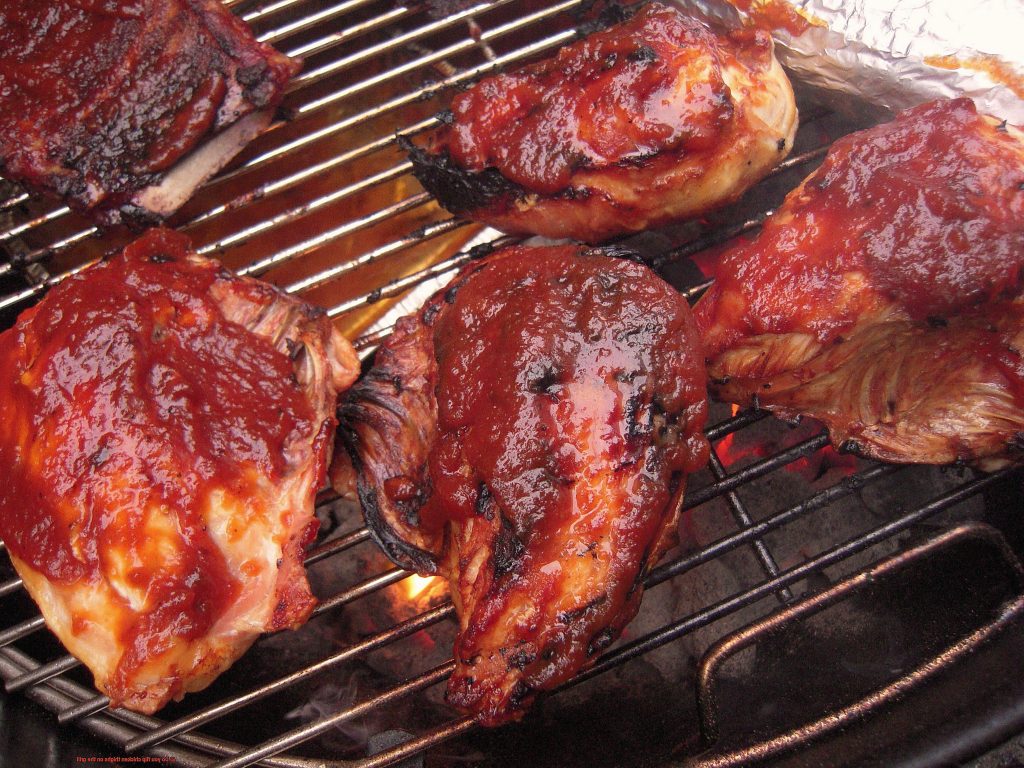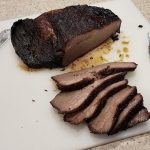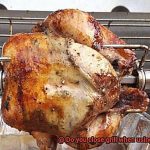It’s time to fire up the grill. But as you prepare to cook up some juicy chicken thighs, you might be wondering – should you flip them? It’s a question that has sparked many a debate among backyard chefs.
Grilling chicken thighs is an art form, and there are several factors to consider. You want to make sure the meat is cooked through, but flipping too often can result in dry, unappetizing chicken. So what’s the solution?
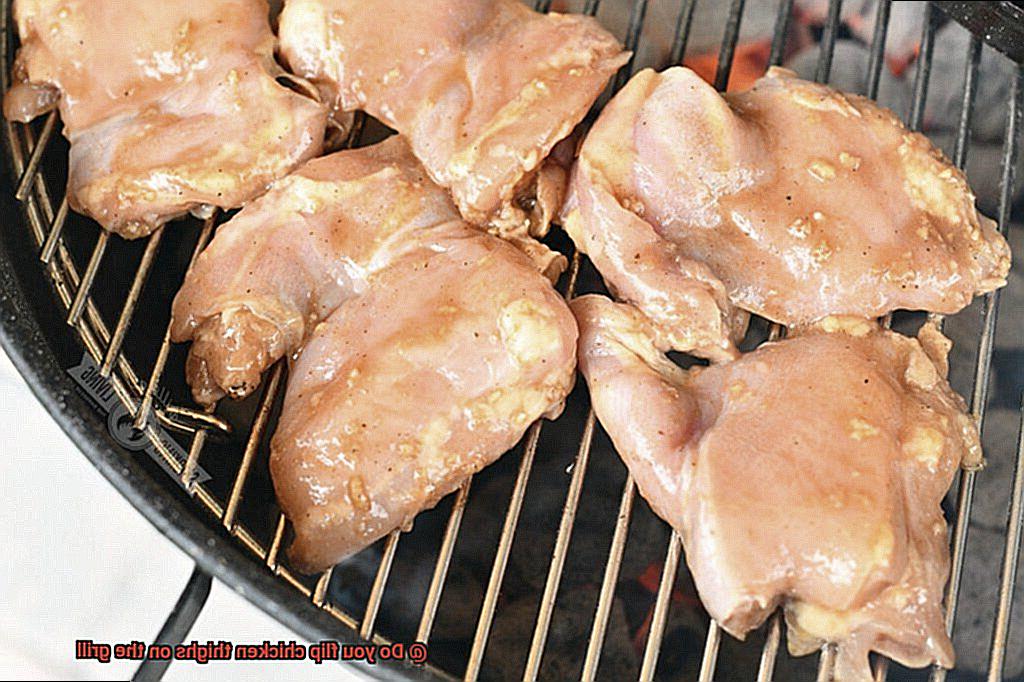
In this blog post, we’ll delve into the science of grilling and explore different methods for cooking chicken thighs on the grill. We’ll weigh the pros and cons of flipping versus not flipping, and provide some tips for achieving perfectly cooked chicken without sacrificing flavor.
But that’s not all – we’ve also got some mouthwatering marinades and seasoning blends to take your grilled chicken game to new heights.
Whether you’re a seasoned grill master or a newbie looking to up your outdoor cooking game, join us as we tackle the age-old question: do you flip chicken thighs on the grill?
Contents
The Benefits of Flipping Chicken Thighs
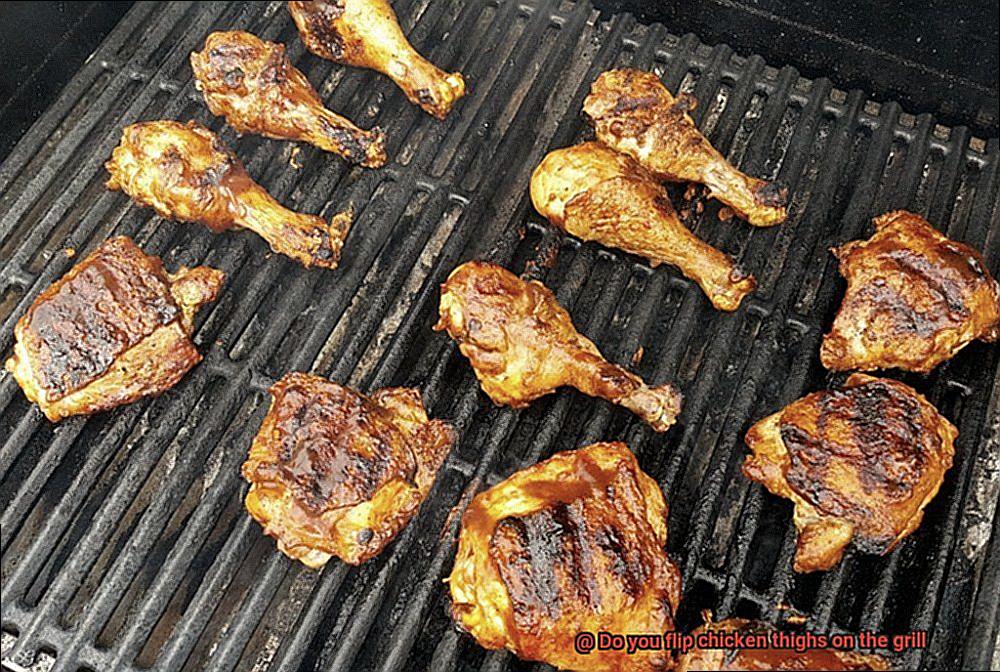
When it comes to grilling chicken thighs, flipping them over during the cooking process is a game-changer. Not only does it ensure even cooking, but it also provides a host of other benefits that will take your grilled chicken to the next level.
First and foremost, flipping chicken thighs guarantees juicy and tender meat. Cooking both sides evenly is key to avoiding dryness, especially for thicker cuts of chicken thighs. Flipping helps to distribute the heat evenly, resulting in perfectly cooked meat every time.
But the benefits don’t stop there. Flipping also creates a crispy and caramelized exterior that adds texture and flavor to your chicken. Allowing each side of the meat to come into contact with the high heat of the grill creates a delicious crust that is simply irresistible.
Another advantage of flipping chicken thighs on the grill is that it allows you to baste the meat with additional marinade or sauce. Brushing the top side with sauce before flipping it over ensures that both sides are coated in flavor. This not only enhances the taste but also helps to keep the meat moist and tender.
Of course, there is a right way and a wrong way to flip chicken thighs on the grill. Flipping too often can cause the meat to dry out, so it’s important to find the right balance. A good rule of thumb is to flip your chicken thighs once halfway through cooking.
To achieve the perfect flip, ensure your grill is preheated to medium-high heat and use tongs to gently turn over the chicken thighs. This will help sear in the juices and create a crispy exterior while maintaining a moist and juicy interior. And always use a meat thermometer to ensure that your chicken is cooked to a safe internal temperature of 165°F.
So, flipping your chicken thighs on the grill is a simple technique that can greatly improve the taste and texture of your grilled chicken. Here are some of its benefits at a glance:
- Even cooking for juicy and tender meat
- Crispy and caramelized exterior for added texture and flavor
- Additional basting with sauce or marinade for enhanced taste
- Simple technique that can take your grilled chicken to the next level
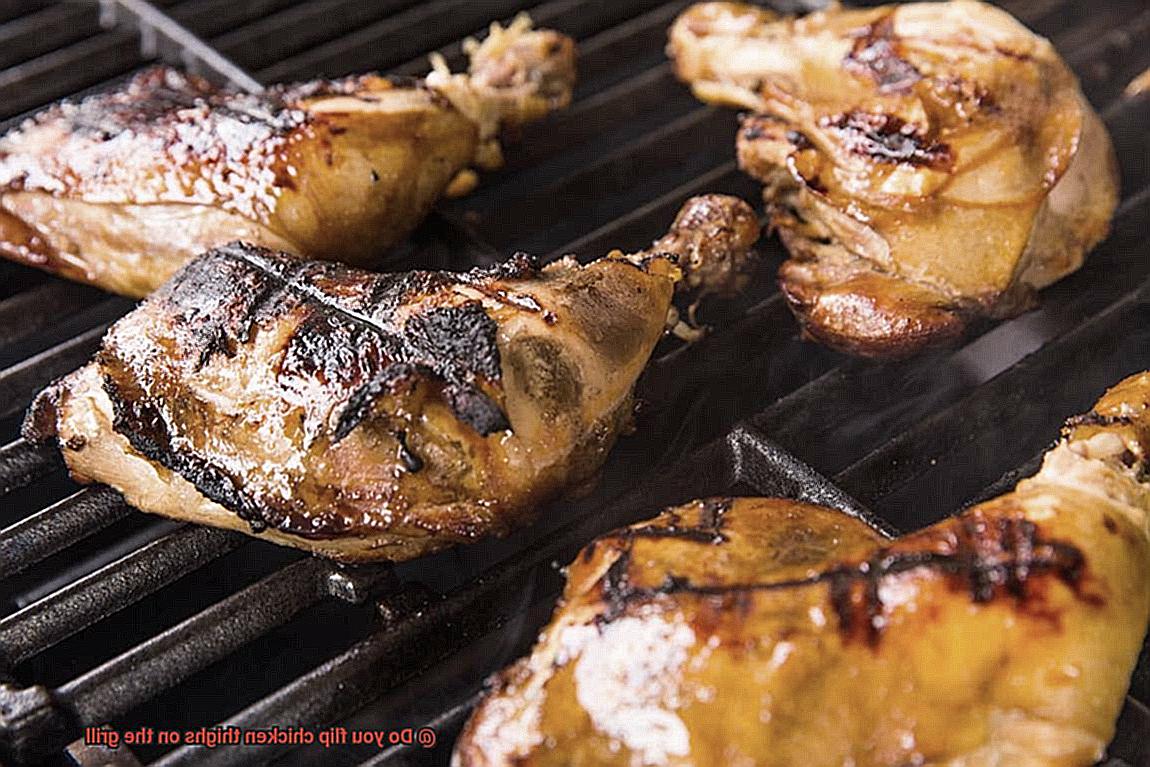
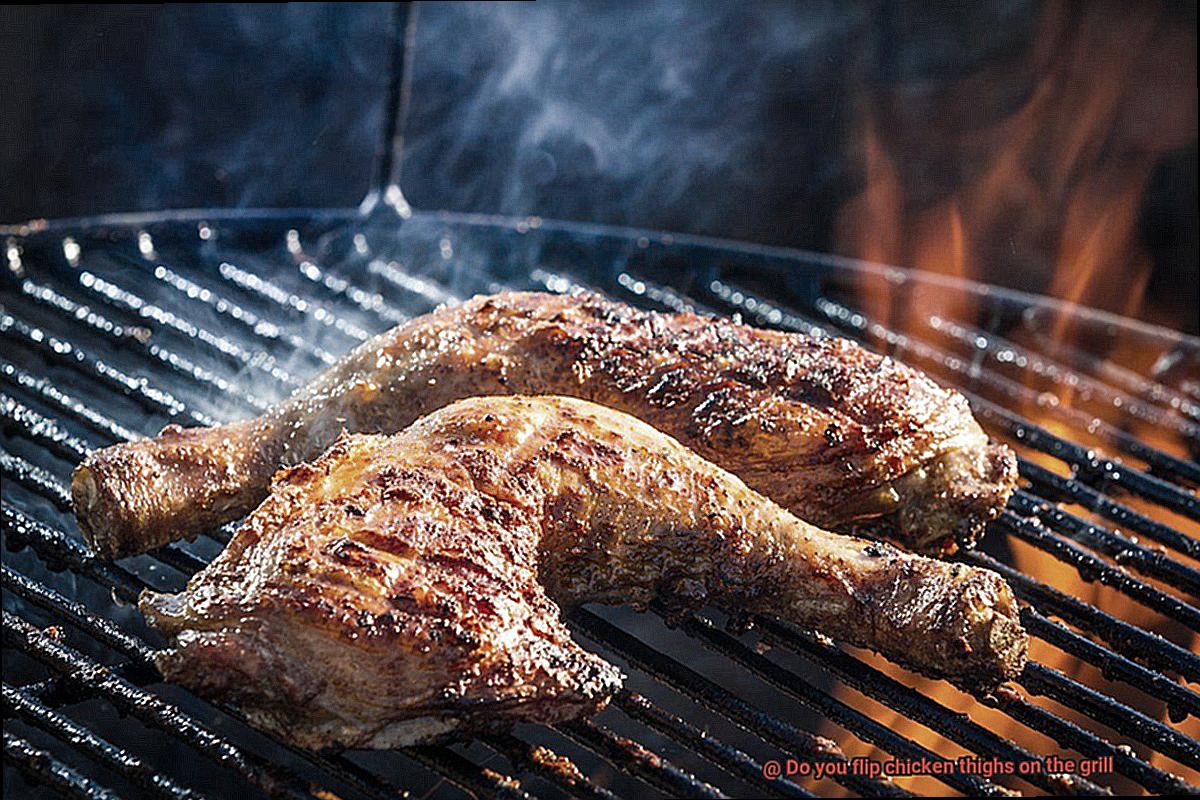
How Often Should You Flip Your Chicken Thighs?
Grilling chicken thighs is a culinary art, and flipping them at the right time and frequency is an essential part of the process. The golden rule of flipping chicken thighs once during cooking ensures even cooking on both sides and a nice sear on the outside. However, other factors can affect how often you should flip your chicken thighs to achieve that perfect balance of juicy and tender meat.
One crucial factor to consider is the heat level of your grill. High heat can quickly burn chicken thighs, so you may need to flip them more frequently to prevent charring. Conversely, if you’re cooking over lower heat, you may not need to flip them as often.
Another critical factor is the thickness of your chicken thighs. Thicker cuts will take longer to cook through, so flipping them more frequently will ensure they cook evenly. Thinner cuts, on the other hand, may only need to be flipped once.
If you’re unsure about your chicken’s doneness, a meat thermometer is your best friend. It allows you to monitor the internal temperature and ensure that it reaches a safe temperature of 165 degrees Fahrenheit. Once your chicken reaches this temperature, you can rest easy knowing it’s fully cooked and ready to devour.
To sum it up, flipping your chicken thighs at the right frequency requires careful consideration of factors like heat level, thickness, and doneness. By taking these factors into account and using a meat thermometer, you’ll be able to prepare deliciously juicy and perfectly cooked chicken thighs every time.
In conclusion, follow these essential tips when grilling chicken thighs:
- Flip them once during cooking.
- Adjust flipping frequency based on heat level and thickness.
- Use a meat thermometer to ensure doneness.
Preheating the Grill and Temperature Considerations
Then, you need to pay attention to the preheating of your grill and temperature considerations during cooking.
First things first, preheating is a crucial step that should not be skipped. It ensures that your chicken thighs cook evenly and do not stick to the grill grates, resulting in a mouthwatering meal. To preheat your grill, turn all burners to their highest setting and close the lid for around 10-15 minutes. During this time, you can prepare your chicken by seasoning it with your favorite spices or marinade.
Temperature considerations are equally important when it comes to grilling chicken thighs. The secret here is to cook them at a high temperature between 375-450°F (190-232°C) for optimal results. This high temperature sears the outside of the chicken, locking in moisture and flavor while cooking the inside perfectly. Don’t forget to have a meat thermometer on hand to check the internal temperature of your chicken thighs, ensuring they reach a safe temperature of 165°F (74°C).
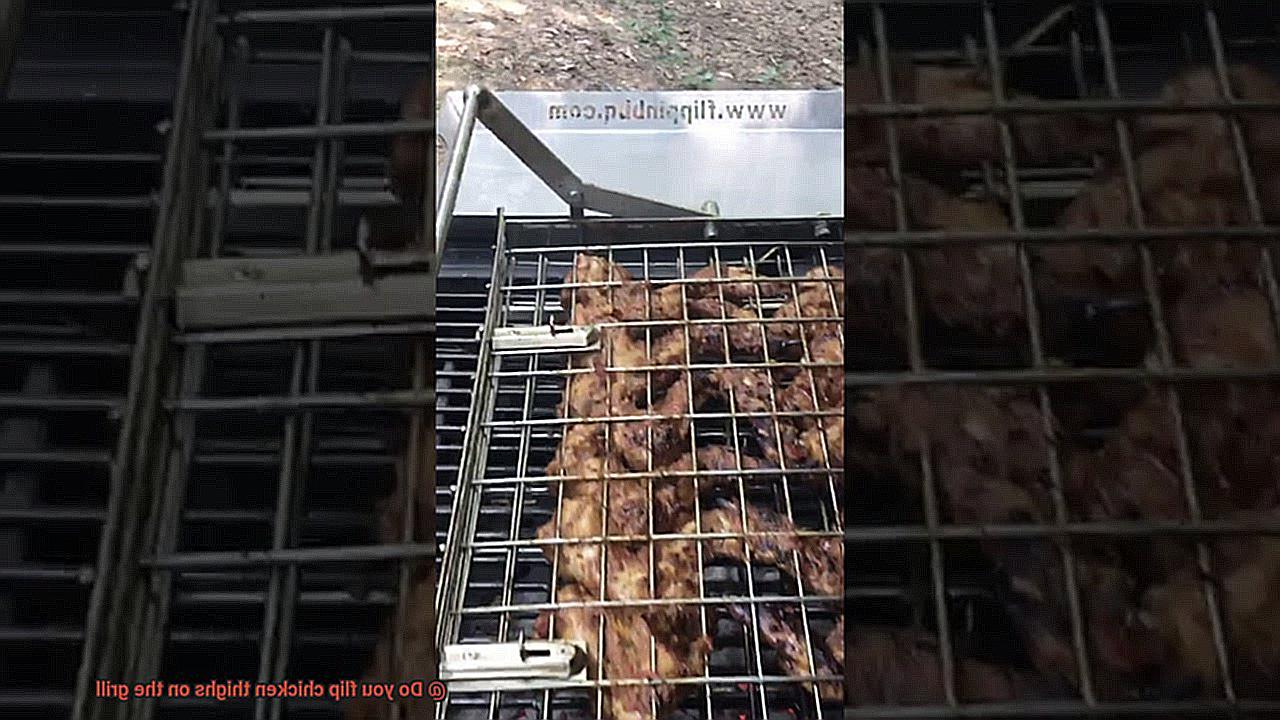
Flipping chicken thighs on the grill can be tricky, but here’s a tip: flip them only once halfway through cooking time. Over-flipping can cause them to dry out or stick to the grill grates, while flipping them only once ensures even cooking and a crispy exterior.
Using a Meat Thermometer to Ensure Safety
Grilling up some chicken thighs on a beautiful day is a wonderful way to enjoy the outdoors and indulge in delicious food. However, it’s crucial to prioritize safety when cooking meat, and that’s where a meat thermometer comes in. A meat thermometer is a reliable tool that helps measure the internal temperature of your chicken to ensure it’s cooked thoroughly and safe for consumption.
To use a meat thermometer for your grilled chicken thighs, follow these tips:
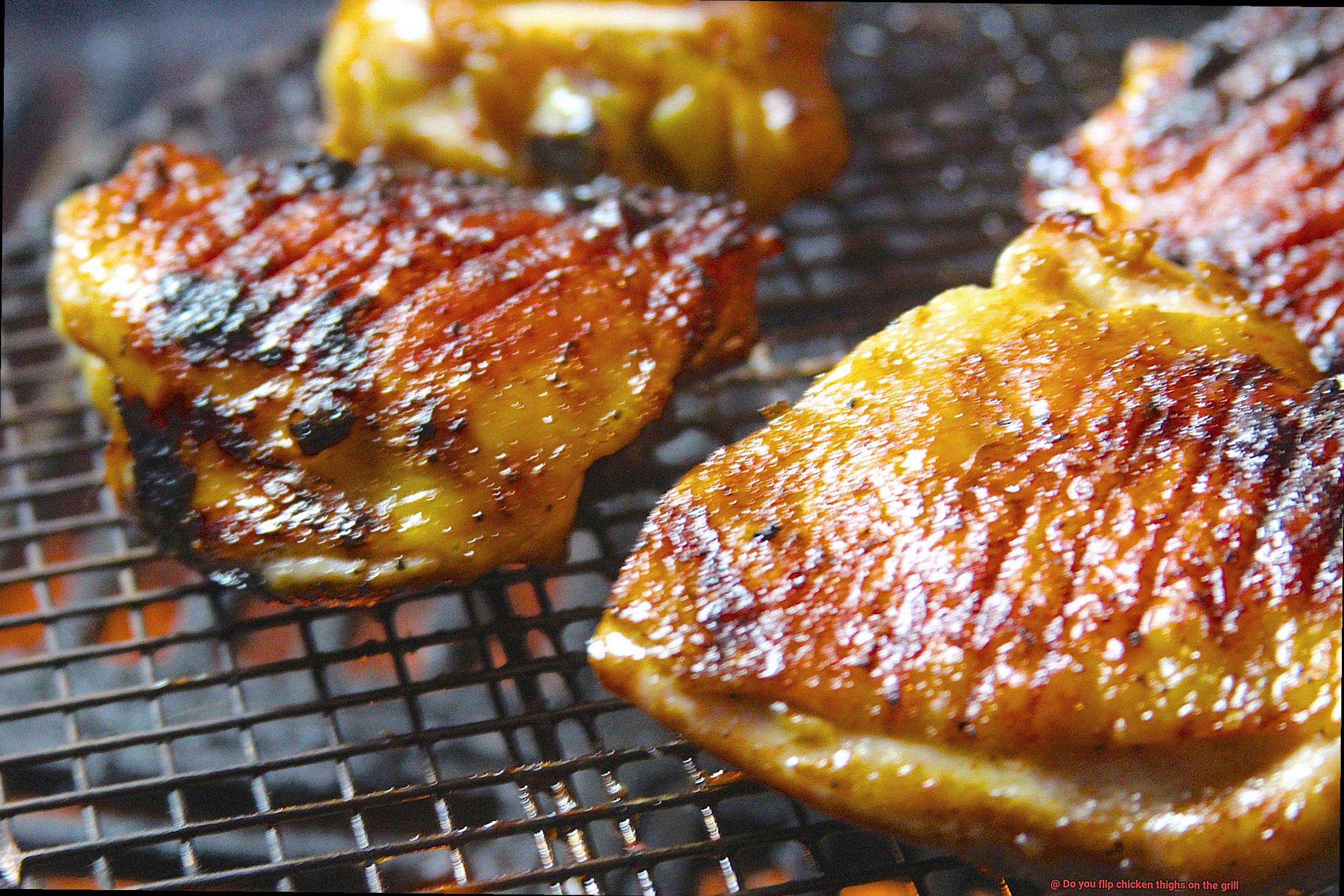
- Insert the thermometer in the thickest part of the thigh: This area usually has the most meat, so it’s essential to measure the temperature here to guarantee that your chicken is cooked all the way through.
- Avoid touching the bone: Contact with the bone can interfere with the accuracy of your reading, so try to insert the thermometer away from it.
- Check multiple spots: Checking several spots will give you a more accurate reading and ensure that all parts of your chicken are cooked thoroughly.
- Aim for 165°F (74°C): The USDA recommends cooking chicken thighs to an internal temperature of 165°F (74°C) for safe consumption.
- Clean your thermometer: After each use, make sure to clean your meat thermometer correctly to avoid any cross-contamination.
Tips for Achieving Crispy Skin
Grilling chicken thighs is a delicious and healthy way to enjoy a meal, but what really takes it to the next level is achieving that crispy skin. Here are some tips to help you get that perfect crunch and flavor.

Pat Dry for Perfect Crispy Skin
To ensure crispy skin, pat dry the chicken thighs with paper towels before seasoning them. This will remove any excess moisture from the surface and prevent steaming, which can lead to soggy skin. Dry skin equals crispy skin.
Generously Season for Taste
Season the chicken thighs generously with salt and your favorite spices or herbs. Rub the seasoning into the skin and let it sit for at least 30 minutes before grilling. This will allow the seasoning to penetrate the meat and add flavor.
High Heat is Key
Start with high heat to sear the skin and lock in the juices. Place the chicken thighs on the grill skin-side down and resist the temptation to move them around too much. Allow them to cook for about 5-7 minutes before flipping them over. This will allow time for the skin to crisp up and develop that beautiful golden brown color.
Check Temperature for Safety
Use a meat thermometer to check each thigh individually, ensuring even cooking. Once flipped, reduce the heat to medium and continue cooking until the internal temperature reaches 165°F. This ensures that your chicken is cooked through and safe to eat.
Brush with Oil or Butter for Extra Crispy Skin
For an extra boost of crispiness, brush the chicken with oil or butter during the final few minutes of cooking and turn up the heat slightly. This will help any remaining areas of skin to crisp up and develop that perfect texture.
Preventing Overcooking and Dryness
Grilling chicken thighs is a favorite for many, but overcooking and dryness can quickly ruin the meal. As an expert on preventing overcooking and dryness, I’m here to help you take your grilling game to the next level.
Marinating your chicken can add flavor and moisture to your meat. A simple marinade with olive oil, lemon juice, and herbs can keep your chicken juicy and tender. Allow the marinade to do its magic for at least 30 minutes before grilling.
Another crucial step in preventing overcooked and dry chicken is monitoring the internal temperature. Use a meat thermometer to check for an internal temperature of 165°F, which is the recommended safe temperature for chicken.
To prevent uneven cooking, flip the chicken thighs during grilling. Flipping allows for even cooking on both sides, ensuring that every bite of your chicken is cooked perfectly.
Opening the grill lid frequently can cause fluctuations in temperature, leading to uneven cooking and dryness. Keep the lid closed as much as possible to maintain a consistent temperature.
Lastly, let your chicken rest for a few minutes before serving. Resting allows the juices to redistribute throughout the meat, creating a juicy and flavorful final product that everyone will love.
kPwVP3XPDkY” >
Conclusion
To truly master the art of grilling chicken thighs, one must consider a variety of factors to achieve the perfect balance of tender, juicy meat and a crispy exterior. And when it comes to flipping those thighs on the grill, there’s no doubt that it can be a game-changer.
Why flip? For starters, it ensures even cooking and creates that crave-worthy caramelized exterior. Plus, it allows for additional basting with your favorite sauce or marinade. But beware – flipping too often can lead to dry and unappetizing chicken. So finding the right balance is key.
To achieve grilled chicken perfection, start by preheating your grill and considering temperature carefully. And don’t forget about safety – using a meat thermometer is crucial. Then, focus on achieving that coveted crispy skin while preventing overcooking and dryness.
By following these tips and tricks, you’ll be well on your way to impressing family and friends with mouthwatering grilled chicken thighs. Remember – grilling should be fun.
Experiment with different techniques and seasonings until you find what works best for you.

